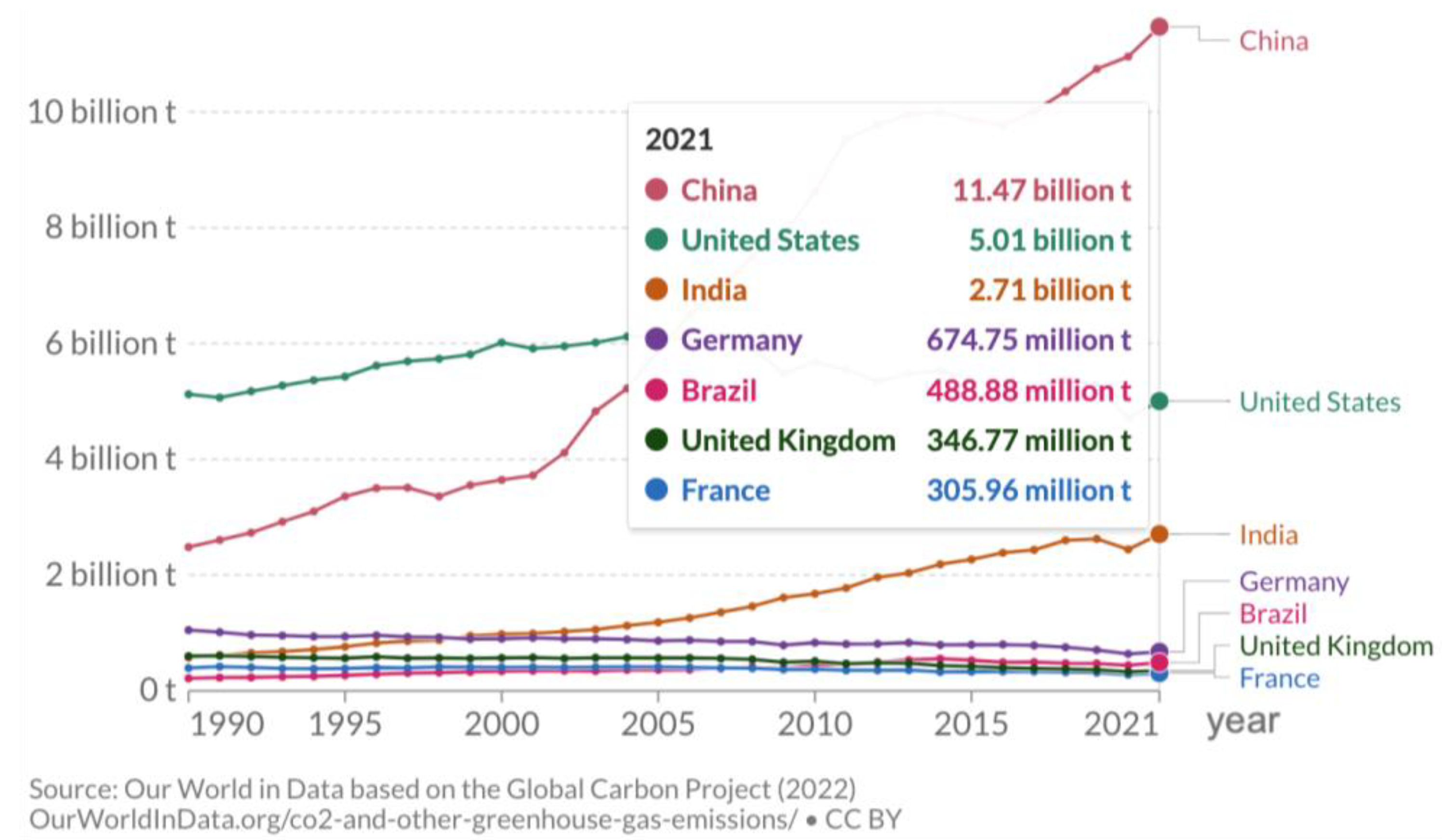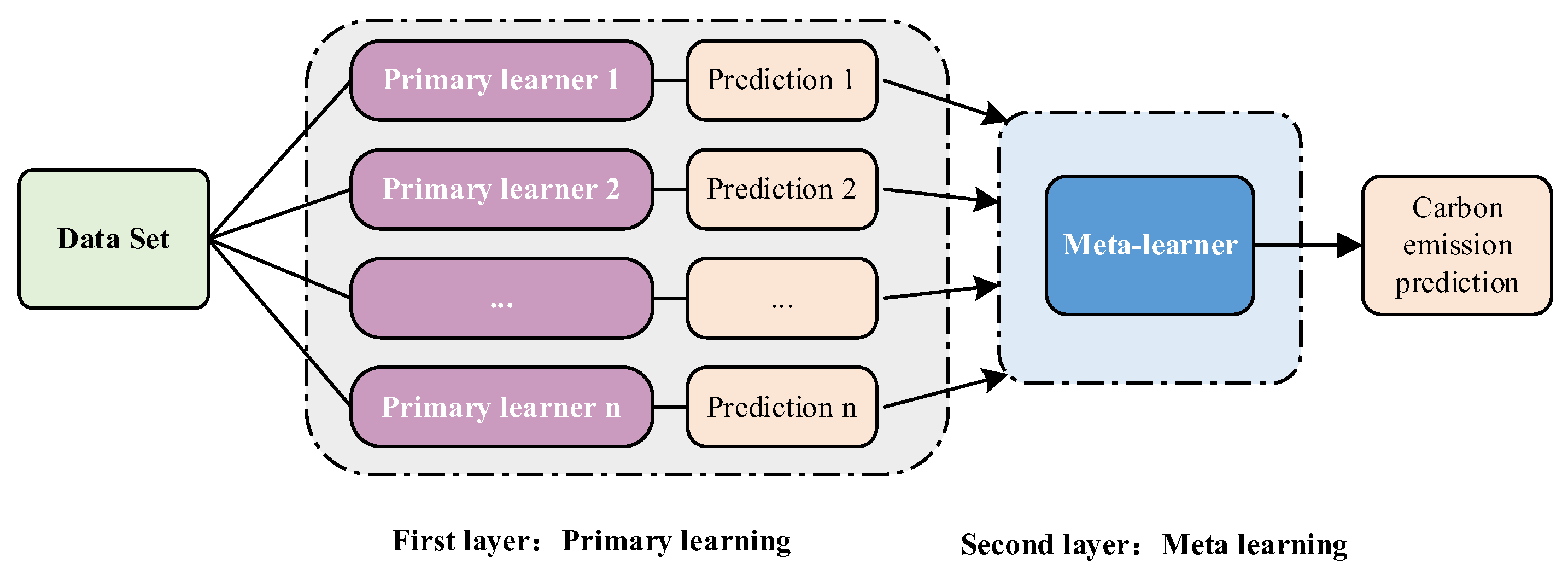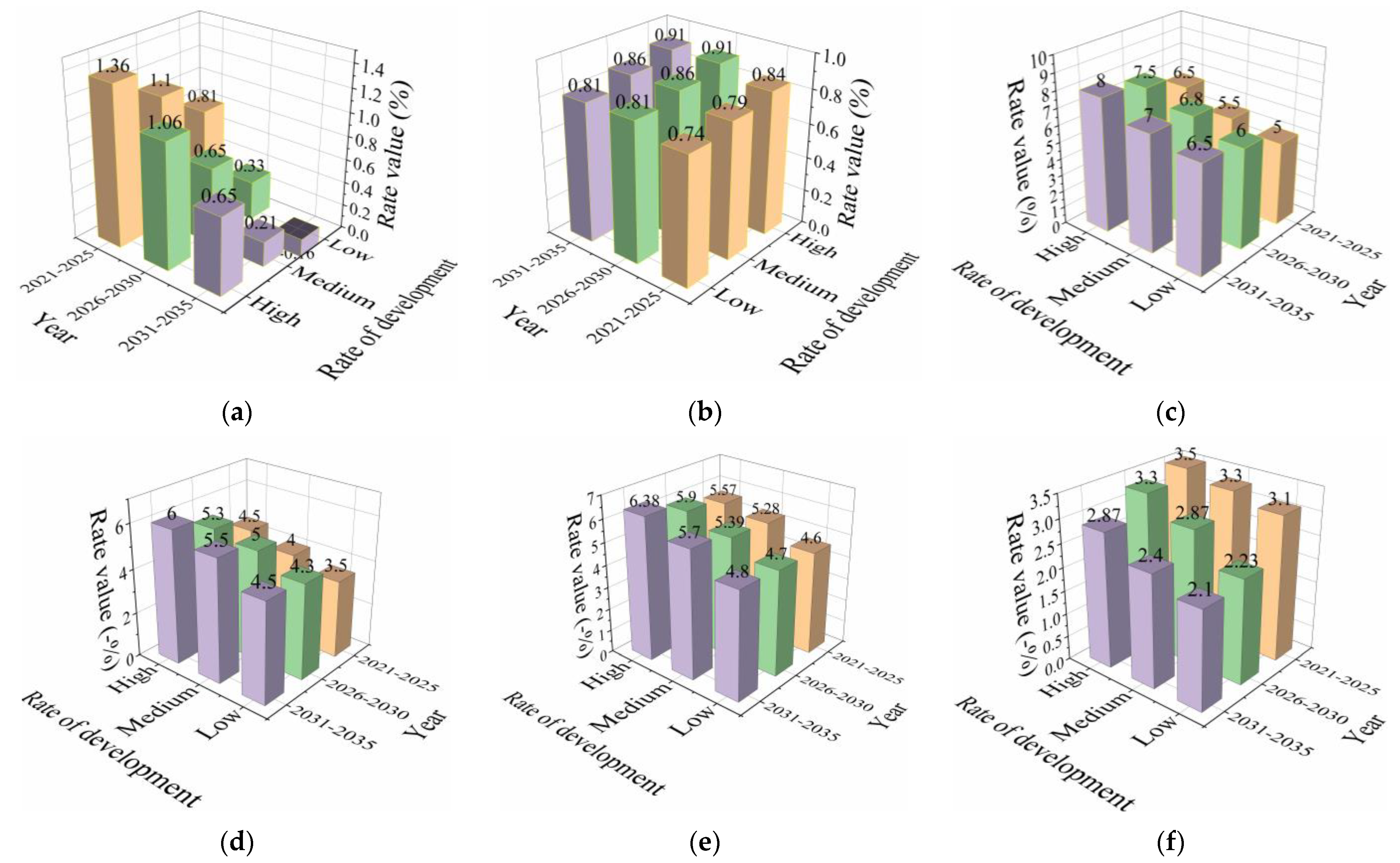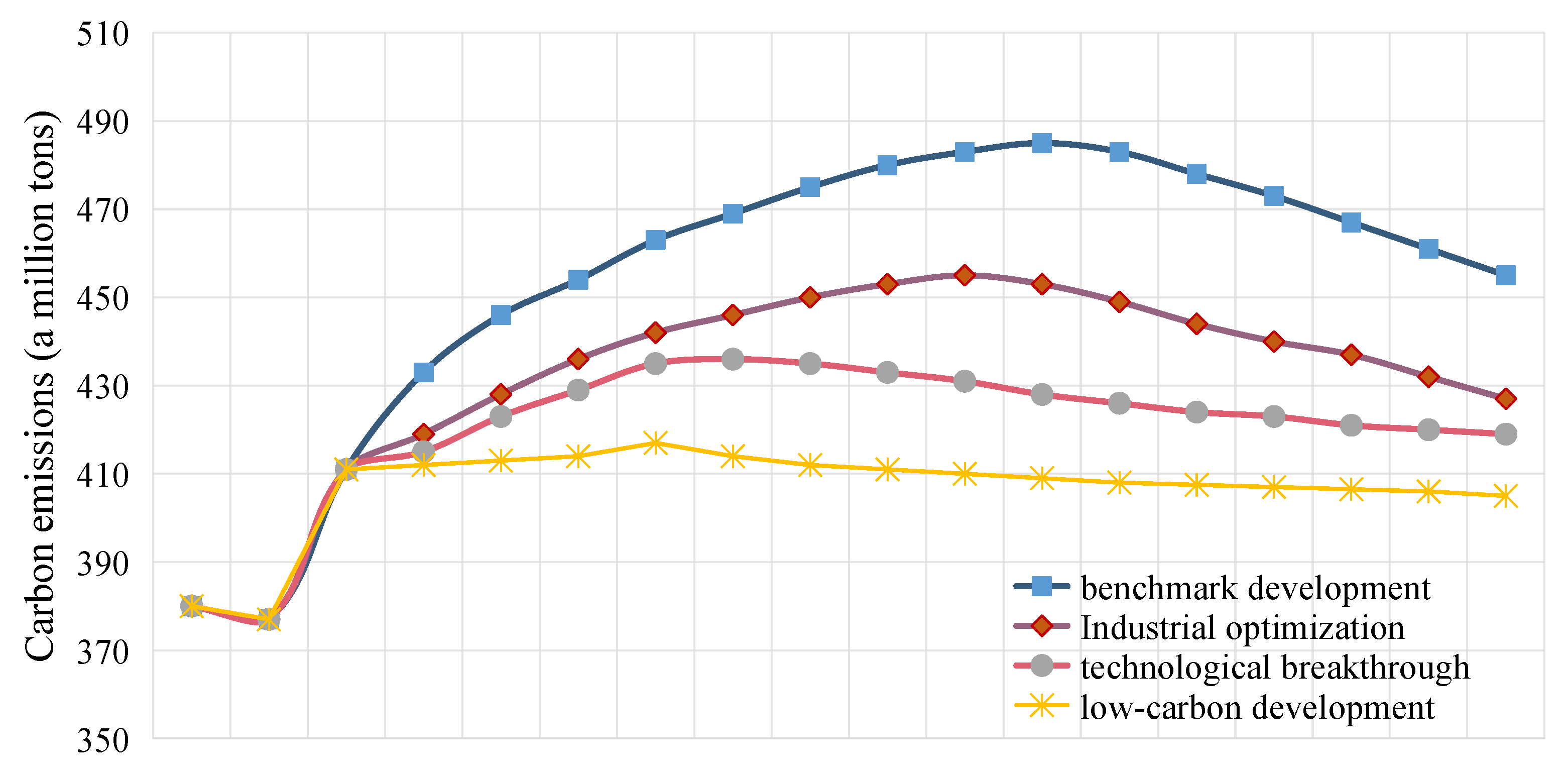Carbon Footprint Prediction of Thermal Power Industry under the Dual-Carbon Target: A Case Study of Zhejiang Province, China
Abstract
:1. Introduction
2. Analysis of Factors Influencing Carbon Footprint Based on Extended STIRPAT Model
3. Carbon Footprint Prediction Model Based on Stacking Ensemble Learning
3.1. Stacking Ensemble Learning Theory
3.2. Stacking Ensemble Learning Construction Process
- (1)
- Identify the primary learning level. The primary learner can be determined according to the principle of “good but different”, taking into account the symbolism and connectionism from machine learning; common k-nearest neighbors (KNNs), linear regression (LR), BP neural networks, decision trees (DTs), and support vector machines (SVMs) from statistical learning; and random forest (RF) algorithms as represented by string and parallel integration, adaptive boosting (AdaBoost), gradient boosting decision trees (GBDTs), and extreme gradient boosting (XG Boost). R2 and MAPE are used as evaluation indicators to train the above nine machine learning models and measure the prediction ability of each model. The primary learner layer is composed of learners with strong prediction abilities and different principles;
- (2)
- Determine the meta-learning layer. On the basis of the determined primary learning layer, the above nine learners are used as meta-learners to conduct a comparative analysis of R2 and MAPE evaluation indicators, determine the meta-learners, and form the prediction model structure for the stacking ensemble learning;
- (3)
- The collected dataset is used to train the stacking integrated learning and achieve carbon footprint prediction.
4. Learner’s Basic Principles
4.1. Logistic Regression (LR)
4.2. Gradient Lifting Decision Tree (GBDT)
- (1)
- Assume that the dataset of the GBDT is D = {(x1,y1), (x2,y2), …, (xn,yn)}. Estimate a constant value c to minimize the loss function, and construct a number with only root nodes. The initialization model can be expressed as follows:where f0(x) is the initialization model; L(yi, c) is the loss function; and c is a constant;
- (2)
- Iterative phase. First, suppose there are M trees and calculate the negative gradient and residual value of the loss function for the sample (i = 1, 2, …, n). The equation is:
- (3)
- Fit the mth regression tree with (xi, rmi) to determine the leaf node area Rmj (j = 1, 2, …, Jm) of the mth tree; here, Jm is the number of leaf nodes of the mth regression tree. Calculate the best fit value for each leaf node to minimize the loss function:where yi is the observation value of sample xi of the jth leaf node; fm−1(xi) is the prediction value of sample xi of the jth leaf node on the previous tree; and cmj is the minimum error between yi and fm−1(xi) of the jth leaf node;
- (4)
- Update the current round model as follows:
- (5)
- Repeat until the expected number of base learners is reached, and the last adept learner is:
4.3. Limit Gradient Lifting Tree (XGBoost)
4.4. BP Neural Network
5. Example Analysis of Carbon Footprint Prediction Based on Stacking Integrated Learning
5.1. Dataset Source
5.1.1. Data Source for Influencing Factors
5.1.2. Data Calculation for Carbon Emissions
5.2. Construction of Stacking Ensemble Learning Model
5.2.1. Model Evaluation Index
5.2.2. Selection of Primary Learners
5.2.3. Selection of Meta Learners
5.2.4. Algorithm Comparison
5.3. Scenario Analysis
5.3.1. Scenario Settings
5.3.2. Scenario Result Analysis
- (1)
- Benchmark development scenario: The parameter settings for this scenario refer to the planning and development described in the existing policy documents from the government. It is evident from Figure 13 that the thermal power industry in Zhejiang Province is anticipated to reach a carbon peak in 2029 rather than before 2025 as expected by the Zhejiang provincial government, and its maximum carbon emissions will be 485 million tons. The government and relevant departments of enterprises must take concrete action to control the carbon emissions rate of thermal power enterprises, link all kinds of power supply, improve the system regulation, switch to clean energy, improve the capacity of new energy to participate in power grid regulation, ensure the goodwill of online users, build virtual power plants, actively tap the potential of green hydropower energy, and make massive disordered resources orderly and adjustable. Other important steps include optimizing local power flow distribution, boosting the utilization effectiveness of regional power grid equipment, reducing the peak carbon emissions of thermal power units through dynamic optimization of line impedance characteristics, constructing clean and efficient thermal power development systems, and improving the flexibility of thermal power generator sets. In this way, it should be possible to facilitate complete consideration of the grid platform hub and improve source network load storage interaction capabilities by creating a highly elastic distribution network with a flexible grid structure, intelligent self-healing, and efficient interactions;
- (2)
- Industrial optimization scenario: This scenario is a development model involving optimization of the industrial structure and reductions in the share of secondary industry. It is evident from Figure 13 that the thermal power industry in Zhejiang Province will reach peak carbon emissions in 2028 of 455 million tons and then show a downward trend year on year. Compared with the benchmark development scenario, it can reach peak carbon emissions two years ahead of time. Therefore, it is recommended to guide capital to focus on green and low-carbon industries, expand the proportion of industries with low energy intensity, control and gradually reduce the proportion of high energy-consuming industries, and promote the low-carbon transformation of industries, as well as structural optimization and upgrading. The government needs to vigorously develop low-carbon-related high-tech industries, such as the digital economy and high-end modern service industries; form an industrial system with low energy consumption and low carbon emissions; vigorously promote clean energy; reduce the use of fossil fuels; optimize the energy production layout; strengthen demand-side management; optimize the new energy transregional and transprovincial scheduling mechanism; and solve the problem of stock and consumption increases;
- (3)
- Technology breakthrough scenario: This scenario is a development model involving the reduction of energy consumption by improving energy technology. It is evident from Figure 13 that the thermal power industry in Zhejiang Province can reach peak carbon emissions in 2025 of 429 million tons. Compared with the industrial optimization scenario, improving energy technology can reduce carbon emissions more effectively and attain the carbon peak earlier. By expanding the proportion of natural gas, increasing the percentage of alternative energy, limiting the use of coal, increasing the percentage of nuclear energy, and increasing the percentage of energy transferred from other provinces, the province can build a diversified clean energy supply system; improve energy utilization efficiency across the whole process of energy processing, conversion, and final consumption; and promote energy supply security and low-carbon transformation development. By reducing the proportion of fossil fuels used, it can promote the use of clean energy, such as wind energy, hydropower, and solar energy, according to local conditions, which has a very important role to play in the adjustment of the energy structure and the reduction of carbon emissions. To reduce the growth rate for carbon emissions and achieve the goal of carbon peaking, technological progress is the top priority. The key to low-carbon technology is improving energy efficiency and increasing the proportion of clean energy and electrification of the entire energy system through scientific and technological innovation. Establishing a joint emissions reduction group including energy supply, raw material production, primary product processing, and other downstream departments will help with the goals of coordinating the design of energy cascade utilization, material recycling, and production process improvement and promote collaborative low-carbon transformations among various departments of the industrial chain;
- (4)
- Scenario for low-carbon development: This scenario is a development mode involving intervention and control from the perspective of population, economy, industry, and energy. It is evident from Figure 13 that the thermal power industry in Zhejiang Province can reach peak carbon emissions in 2024 of 395 million tons. In contrast to the technology breakthrough scenario, this scenario can reduce carbon emissions more effectively and facilitate the accomplishment of the carbon peak approach earlier. However, it is also necessary to consider whether comprehensive intervention will bring about additional negative effects, such as affecting the economic benefits derived from the thermal power industry.
- (1)
- Make the industrial structure more efficient and promote the growth of high-tech enterprises. The thermal power industry must speed up industrial transformation, reduce the proportion of highly polluting energy in production, and limit the blind expansion of highly polluting, high-energy, and low-productivity factories. It is crucial to optimize the development layout of the power grid, increase the construction of UHV electricity transmission systems and a supporting power grid, vigorously promote the construction of a new energy supply and consumption system, provide strong grid support for the development of various sources of clean energy, and improve the dynamic stability of the power grid to adapt to new energy. It is also necessary to strengthen the construction of pumped storage power stations and actively support the large-scale application of new types of energy storage;
- (2)
- Stabilize economic development and accelerate scientific and technological progress. When the carbon emissions of the thermal power industry reach a peak, it will be essential to ensure that the economic output, energy consumption structure, and industrial structure remain at a stable and reasonable level, taking into account the upgrading of technology, and to reduce emissions, especially carbon emissions. It is important to support R&D and the promotion of electrification technology in all fields and comprehensively improve the electrification rate for all industries. At the same time, it is essential to expedite the promotion of new energy-saving and low-carbon technologies, such as near-zero energy consumption buildings, electric vehicles, heat pump heating, industrial waste heating, etc. Finally, it is essential to research the optimization of intensive, intelligent, and refined management technology for the energy system and to use digitalization and intelligence as a bridge for the coordination of the supply and demand sides of energy to promote the acceleration of intelligent, low-carbon upgrading of the energy system.
6. Conclusions
Author Contributions
Funding
Institutional Review Board Statement
Informed Consent Statement
Acknowledgments
Conflicts of Interest
References
- Gür, T.M. Carbon dioxide emissions, capture, storage and utilization: Review ofmaterials, processes and technologies. Prog. Energy Combust. Sci. 2022, 89, 100965. [Google Scholar] [CrossRef]
- Ma, Q.; Murshed, M.; Khan, Z. The nexuses between energy investments, technological innovations, emission taxes, and carbon emissions in China. Energy Policy 2021, 155, 112345. [Google Scholar] [CrossRef]
- Hannah Ritchie, Max Roser and Pablo Rosado (2020)—“CO2 and Greenhouse Gas Emissions”. Published online at OurWorldInData.org. Available online: https://ourworldindata.org/co2-and-other-greenhouse-gas-emissions (accessed on 1 February 2023).
- Friedlingstein, P.; O’Sullivan, M.; Jones, M.W.; Andrew, R.M.; Gregor, L.; Hauck, J.; Le Quéré, C.; Luijkx, I.T.; Olsen, A.; Peters, G.P.; et al. Global carbon budget 2022. Earth Syst. Sci. Data 2022, 14, 4811–4900. [Google Scholar] [CrossRef]
- Wu, L.; Sun, L.; Qi, P.; Ren, X.; Sun, X. Energy endowment, industrial structure upgrading, and CO2 emissions in China: Revisiting resource curse in the context of carbon emissions. Resour. Policy 2021, 74, 102329. [Google Scholar] [CrossRef]
- Jin, B. Research on performance evaluation of green supply chain of automobile enterprises under the background of carbon peak and carbon neutralization. Energy Rep. 2021, 7, 594–604. [Google Scholar] [CrossRef]
- Wei, Y.M.; Chen, K.; Kang, J.N.; Chen, W.; Wang, X.Y.; Zhang, X. Policy and management of carbon peaking and carbon neutrality: A literature review. Engineering 2022, 14, 52–63. [Google Scholar] [CrossRef]
- Li, R.; Chen, Z.; Xiang, J. A region-scale decoupling effort analysis of carbon dioxide emissions from the perspective of electric power industry: A case study of China. Environ. Dev. Sustain. 2022, 1–26. [Google Scholar] [CrossRef]
- Gosens, J.; Turnbull, A.B.; Jotzo, F. China’s decarbonization and energy security plans will reduce seaborne coal imports: Results from an installation-level model. Joule 2022, 6, 782–815. [Google Scholar] [CrossRef]
- Shi, S.; Yin, J. Global research on carbon footprint: A scientometric review. Environ. Impact Assess. Rev. 2021, 89, 106571. [Google Scholar] [CrossRef]
- Zhou, W.; Zeng, B.; Wang, J.; Luo, X.; Liu, X. Forecasting Chinese carbon emissions using a novel grey rolling prediction model. Chaos Solitons Fractals 2021, 147, 110968. [Google Scholar] [CrossRef]
- Chen, H.; Qi, S.; Tan, X. Decomposition and prediction of China’s carbon emission intensity towards carbon neutrality: From perspectives of national, regional and sectoral level. Sci. Total Environ. 2022, 825, 153839. [Google Scholar] [CrossRef] [PubMed]
- Shi, C. Decoupling analysis and peak prediction of carbon emission based on decoupling theory. Sustain. Comput. Inform. Syst. 2020, 28, 100424. [Google Scholar] [CrossRef]
- Huang, H.; Wu, X.; Cheng, X. The Prediction of Carbon Emission Information in Yangtze River Economic Zone by Deep Learning. Land 2021, 10, 1380. [Google Scholar] [CrossRef]
- Li, Y.; Dong, H.; Lu, S. Research on application of a hybrid heuristic algorithm in transportation carbon emission. Environ. Sci. Pollut. Res. 2021, 28, 48610–48627. [Google Scholar] [CrossRef] [PubMed]
- Ren, F.; Long, D. Carbon emission forecasting and scenario analysis in Guangdong Province based on optimized Fast Learning Network. J. Clean. Prod. 2021, 317, 128408. [Google Scholar] [CrossRef]
- Zhao, X.; Ma, Q.; Yang, R. Factors influencing CO2 emissions in China’s power industry: Co-integration analysis. Energy Policy 2013, 57, 89–98. [Google Scholar] [CrossRef]
- Fan, J.L.; Shen, S.; Xu, M.; Yang, Y.; Yang, L.; Zhang, X. Cost-benefit comparison of carbon capture, utilization, and storage retrofitted to different thermal power plants in China based on real options approach. Adv. Clim. Chang. Res. 2020, 11, 415–428. [Google Scholar] [CrossRef]
- Wei, N.; Jiao, Z.; Ellett, K.; Ku, A.Y.; Liu, S.; Middleton, R.; Li, X. Decarbonizing the Coal-Fired Power Sector in China via Carbon Capture, Geological Utilization, and Storage Technology. Environ. Sci. Technol. 2021, 55, 13164–13173. [Google Scholar] [CrossRef]
- Wang, Q.; Li, S.; Pisarenko, Z. Modeling carbon emission trajectory of China, US and India. J. Clean. Prod. 2020, 258, 120723. [Google Scholar] [CrossRef]
- Javanmard, M.E.; Ghaderi, S.F.; Hoseinzadeh, M. Data mining with 12 machine learning algorithms for predict costs and carbon dioxide emission in integrated energy-water optimization model in buildings. Energy Convers. Manag. 2021, 238, 114153. [Google Scholar] [CrossRef]
- Wu, R.; Wang, J.; Wang, S.; Feng, K. The drivers of declining CO2 emissions trends in developed nations using an extended STIRPAT model: A historical and prospective analysis. Renew. Sustain. Energy Rev. 2021, 149, 111328. [Google Scholar] [CrossRef]
- Huang, J.; Li, X.; Wang, Y.; Lei, H. The effect of energy patents on China’s carbon emissions: Evidence from the STIRPAT model. Technol. Forecast. Soc. Chang. 2021, 173, 121110. [Google Scholar] [CrossRef]
- Yu, S.; Zhang, Q.; Hao, J.L.; Ma, W.; Sun, Y.; Wang, X.; Song, Y. Development of an extended STIRPAT model to assess the driving factors of household carbon dioxide emissions in China. J. Environ. Manag. 2023, 325, 116502. [Google Scholar] [CrossRef]
- Li, Y.; Wang, Z.; Wei, Y. Pathways to progress sustainability: An accurate ecological footprint analysis and prediction for Shandong in China based on integration of STIRPAT model, PLS, and BPNN. Environ. Sci. Pollut. Res. 2021, 28, 54695–54718. [Google Scholar] [CrossRef] [PubMed]
- Ehrlich, P.R.; Holdren, J.P. Impact of Population Growth: Complacency concerning this component of man’s predicament is unjustified and counterproductive. Science 1971, 171, 1212–1217. [Google Scholar] [CrossRef] [PubMed]
- Li, L.; Shen, W.; Sui, S.; Yao, H.; Bao, Z. Crustal thickness beneath the Tanlu fault zone and its tectonic significance based on two-layer H-κ stacking. Earthq. Sci. 2021, 34, 47–63. [Google Scholar] [CrossRef]
- Książek, W.; Gandor, M.; Pławiak, P. Comparison of various approaches to combine logistic regression with genetic algorithms in survival prediction of hepatocellular carcinoma. Comput. Biol. Med. 2021, 134, 104431. [Google Scholar] [CrossRef]
- Yu, Z.; Wang, Z.; Zeng, F.; Song, P.; Baffour, B.A.; Wang, P.; Wang, W.; Li, L. Volcanic lithology identification based on parameter-optimized GBDT algorithm: A case study in the Jilin Oilfield, Songliao Basin, NE China. J. Appl. Geophys. 2021, 194, 104443. [Google Scholar] [CrossRef]
- Qiu, Y.; Zhou, J.; Khandelwal, M.; Yang, H.; Yang, P.; Li, C. Performance evaluation of hybrid WOA-XGBoost, GWO-XGBoost and BO-XGBoost models to predict blast-induced ground vibration. Eng. Comput. 2022, 38 (Suppl. S5), 4145–4162. [Google Scholar] [CrossRef]
- Hu, F.; Wang, M.; Zhu, Y.; Liu, J.; Jia, Y. A time simulated annealing-back propagation algorithm and its application in disease prediction. Mod. Phys. Lett. B 2018, 32, 1850303. [Google Scholar] [CrossRef]
- Sun, W.; Ren, C. Short-term prediction of carbon emissions based on the EEMD-PSOBP model. Environ. Sci. Pollut. Res. 2021, 28, 56580–56594. [Google Scholar] [CrossRef] [PubMed]
- Fang, D.; Zhang, X.; Yu, Q.; Jin, T.C.; Tian, L. A novel method for carbon dioxide emission forecasting based on improved Gaussian processes regression. J. Clean. Prod. 2018, 173, 143–150. [Google Scholar] [CrossRef]
- Vivas, E.; Allende-Cid, H.; Salas, R. A Systematic Review of Statistical and Machine Learning Methods for Electrical Power Forecasting with Reported MAPE Score. Entropy 2020, 22, 1412. [Google Scholar] [CrossRef] [PubMed]
- Liu, Z.; Jiang, P.; Wang, J.; Zhang, L. Ensemble system for short term carbon dioxide emissions forecasting based on multi-objective tangent search algorithm. J. Environ. Manag. 2022, 302, 113951. [Google Scholar] [CrossRef] [PubMed]
- Tian, H.; Wang, P.; Tansey, K.; Zhang, S.; Zhang, J.; Li, H. An IPSO-BP neural network for estimating wheat yield using two remotely sensed variables in the Guanzhong Plain, PR China. Comput. Electron. Agric. 2020, 169, 105180. [Google Scholar] [CrossRef]
- Lin, B.; Jia, Z. What will China’s carbon emission trading market affect with only electricity sector involvement? A CGE based study. Energy Econ. 2019, 78, 301–311. [Google Scholar] [CrossRef]
- Liu, X.; Meng, X.; Wang, X. Carbon emissions prediction of Jiangsu province based on lasso-bp neural network combined model. In IOP Conference Series: Earth and Environmental Science; IOP Publishing: Bristol, UK, 2021; Volume 769, p. 022017. [Google Scholar] [CrossRef]
- Yang, L.; Xia, H.; Zhang, X.; Yuan, S. What matters for carbon emissions in regional sectors? A China study of extended STIRPAT model. J. Clean. Prod. 2018, 180, 595–602. [Google Scholar] [CrossRef]
- Zhao, L.; Zhao, T.; Yuan, R. Scenario simulations for the peak of provincial household CO2 emissions in China based on the STIRPAT model. Sci. Total Environ. 2022, 809, 151098. [Google Scholar] [CrossRef]
- Wang, W.; Chen, H.; Yang, R.; Wang, B.; Yang, Y. Spatial and Temporal Prediction of Carbon Peaking Goals and Zonal Governance Approaches to Achieve Carbon neutrality—A Case Study from Zhejiang Province, China. In Proceedings of the International Conference on Green Building, Civil Engineering and Smart City, Guilin, China, 8–10 April 2022; Springer: Singapore, 2023; pp. 151–165. [Google Scholar] [CrossRef]
- Yao, L.; Jiang, Y. An empirical study on the influencing factors of carbon emissions in East China based on the STIRPAT model. In Advances in Petrochemical Engineering and Green Development; CRC Press: Boca Raton, FL, USA, 2023; pp. 310–315. [Google Scholar]
- Qi, H.; Shen, X.; Long, F.; Liu, M.; Gao, X. Spatial–temporal characteristics and influencing factors of county-level carbon emissions in Zhejiang Province, China. Environ. Sci. Pollut. Res. 2022, 30, 10136–10148. [Google Scholar] [CrossRef]














| Influencing Factor | Symbol | Unit | Meaning/Data Source | |
|---|---|---|---|---|
| Population | Total resident population | P | 10,000 people | Total population |
| Urbanization level | L | % | Urbanization level/total population | |
| Economic output | A | Million CNY | GDP | |
| Industry structure | T | % | Proportion of GDP from secondary industry | |
| Energy consumption intensity | S | 10,000 tons/100 million kwh | Total thermal power energy consumption/thermal power generation | |
| Energy consumption structure | N | % | Percentage of thermal power production in total electric power generation | |
| Meta-Learner | Stacking AdaBoost | Stacking BP | Stacking DT | Stacking GBDT | Stacking KNN | Stacking LR | Stacking RF | Stacking SVM | Stacking XGBoost |
|---|---|---|---|---|---|---|---|---|---|
| R2 | 0.9441 | 0.9944 | 0.9044 | 0.9861 | 0.9302 | 0.9928 | 0.9610 | 0.9430 | 0.9172 |
| MAPE | 0.0128 | 0.0047 | 0.0129 | 0.0071 | 0.0197 | 0.0053 | 0.0147 | 0.0233 | 0.0149 |
| Scenario | Resident Population | Urbanization Level | Economic Output | Industrial Structure | Energy Consumption Intensity | Energy Consumption Structure |
|---|---|---|---|---|---|---|
| Benchmark development scenario | M | M | M | M | M | M |
| Industrial optimization scenario | M | M | M | H | M | M |
| Technology breakthrough scenario | M | M | M | M | H | H |
| Low carbon development scenario | L | L | L | H | H | H |
Disclaimer/Publisher’s Note: The statements, opinions and data contained in all publications are solely those of the individual author(s) and contributor(s) and not of MDPI and/or the editor(s). MDPI and/or the editor(s) disclaim responsibility for any injury to people or property resulting from any ideas, methods, instructions or products referred to in the content. |
© 2023 by the authors. Licensee MDPI, Basel, Switzerland. This article is an open access article distributed under the terms and conditions of the Creative Commons Attribution (CC BY) license (https://creativecommons.org/licenses/by/4.0/).
Share and Cite
Zhang, C.; Zou, X.; Lin, C. Carbon Footprint Prediction of Thermal Power Industry under the Dual-Carbon Target: A Case Study of Zhejiang Province, China. Sustainability 2023, 15, 3280. https://doi.org/10.3390/su15043280
Zhang C, Zou X, Lin C. Carbon Footprint Prediction of Thermal Power Industry under the Dual-Carbon Target: A Case Study of Zhejiang Province, China. Sustainability. 2023; 15(4):3280. https://doi.org/10.3390/su15043280
Chicago/Turabian StyleZhang, Cheng, Xiong Zou, and Chuan Lin. 2023. "Carbon Footprint Prediction of Thermal Power Industry under the Dual-Carbon Target: A Case Study of Zhejiang Province, China" Sustainability 15, no. 4: 3280. https://doi.org/10.3390/su15043280
APA StyleZhang, C., Zou, X., & Lin, C. (2023). Carbon Footprint Prediction of Thermal Power Industry under the Dual-Carbon Target: A Case Study of Zhejiang Province, China. Sustainability, 15(4), 3280. https://doi.org/10.3390/su15043280






